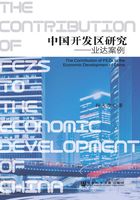
Abstract
Since “opening up”,China has experienced remarkable economic growth,with the old “state control” type of “planned economy” gradually being replaced by a “market driven” type of “socialist market economy”. Different types of Free Economic Zones(FEZs)have played crucial roles in various aspects of China’s economic development since the beginning of Deng Xiaoping’s economic reforms. The majority of studies,however,have focused on the economic effects and roles of Export Processing Zones(EPZs)or Special Economic Zones(SEZs)in less-developed or socialist countries. Within those studies,Shenzhen SEZ is the one that has been studied the most,as it was one of the first FEZs to be established in China,and it is also regarded as the most successful one in China. Other studies have focused on the theoretical issues of FEZs in terms of structure and evolution. Naturally,Shenzhen SEZ has always been a successful model for other types of zones to learn from. However,there are larger numbers of other types of FEZs(e.g. Economic and Technological Development Zones-ETDZs)all around the country,all of which contribute in their own way to the economy. These ETDZs may have learned from SEZs,but have not imitated SEZs. These ETDZs did not receive the same preferential treatment from the government as Shenzhen did,yet some of them have nevertheless been successful,and provided valuable lessons. This thesis will improve on the above-mentioned studies,and will outline the contributions of FEZs by studying one of the successful ETDZs-Yantai Economic and Technological Development Zone/Area(YEDA)over a period of time. Thus,we are looking at a different model-an adaptation.
This thesis will make contributions to the literature on ETDZs in China,and it will analyse the differences between ETDZs and famous SEZs(objectives,characteristics and typologies). In particular it will examine the special case of YEDA,and will suggest why this has been successful and indicate the lessons for other zones to learn from. Whilst various writers have provided contributions to ways for FEZs to achieve success,they have not identified the core factors that can lead FEZs to success. In other words,they did not ascertain the most efficient ways to lead FEZs to success most effectively.
There is only one Shenzhen SEZ,and it is favourably endowed by its location and government favour. When China started to “open up”,it needed a model such as Shenzhen SEZ to boast to the world that the country was changing in the right way. However,following more than 30 years of economic transition,what the country now requires is not simply a model to boast about,but for FEZs to be established in less-developed regions to actually help the country to achieve further,balanced development,as well as to actually raise people’s living standards nationally. Therefore,the core factors or key driving forces that are tested in this research will help those FEZs which may lack natural advantages in order to find their way to achieving success. Finally,the negative aspects of YEDA’s successful experience,and proposals to avoid these negative points,will be examined in detail.